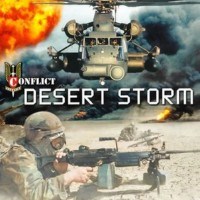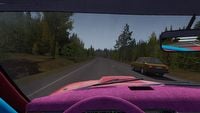Tactical shooter for everyone. Conflict: Desert Storm resembled Ghost Recon, but entry level was extremely low
Shooters with a tactical bent have accustomed us to the fact that they are often aimed at a specific type of player due to their simulation nature. Conflict: Desert Storm tried to break this pattern by offering gameplay for everyone.
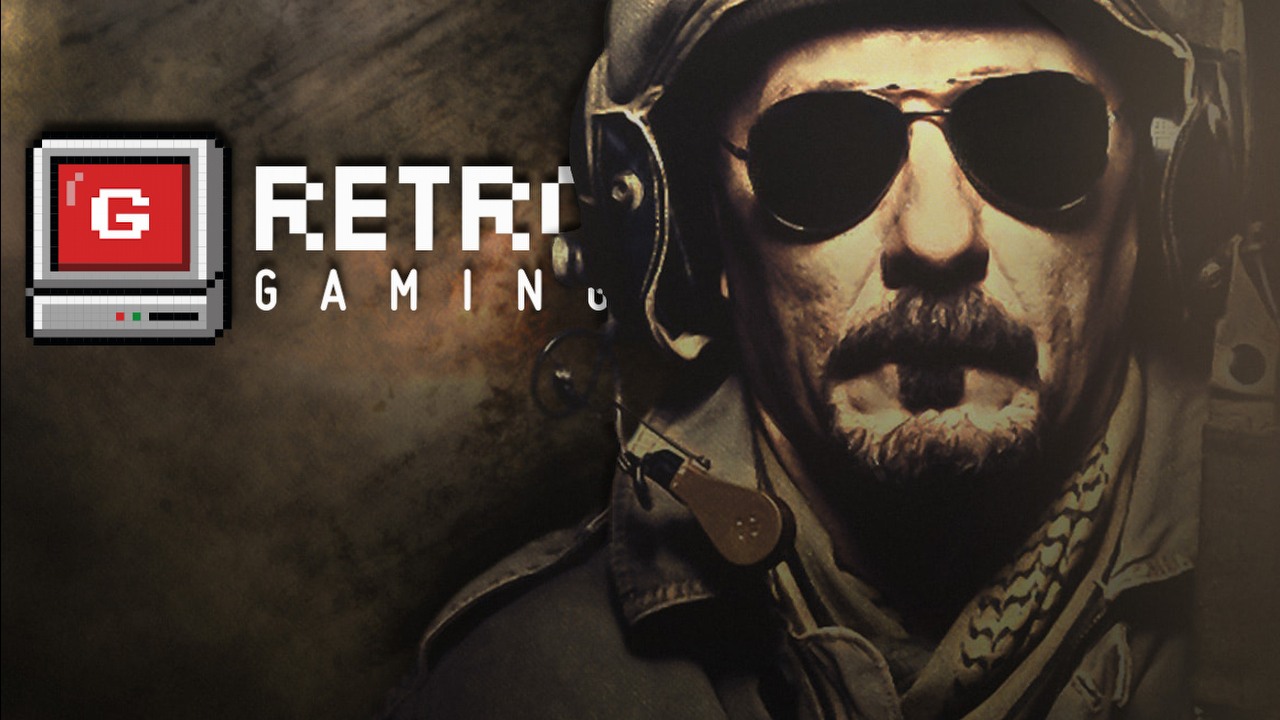
In September 2002, most experts and commentators were no longer asking if the Second Gulf War would break out, but when it would happen. In such an atmosphere, the game Conflict: Desert Storm, a work of Pivotal Games studio, launched, allowing players to see what the previous military operation in that region looked like. Let's check if the discussed game offered something more than just a theme that was "trendy" at the time.
Desert Storm on the screen
Conflict: Desert Storm took us to the Middle East from August 1990. The game told the story of American and British special forces soldiers - Delta Force and SAS - who operated behind enemy lines, initially attempting to obstruct Iraq's invasion of Kuwait as much as possible, and as the operation advanced, they played a significant role in the liberation of the country.
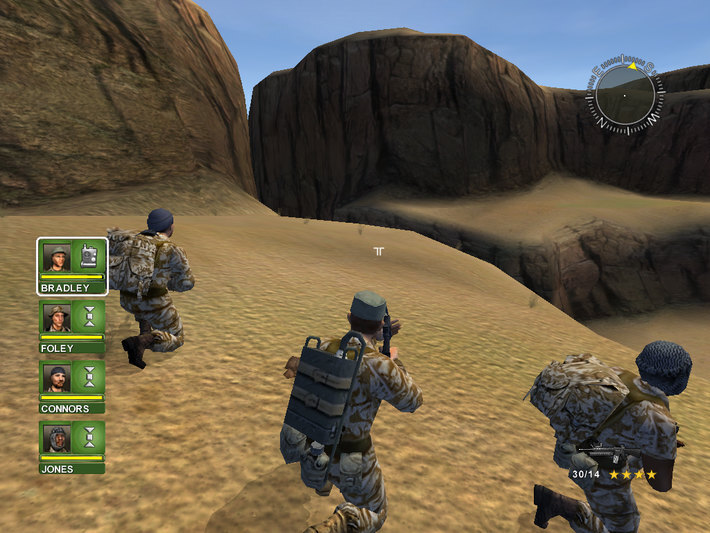
Throughout 15 missions, we were tasked with conducting sabotage and attacking military targets (ranging from bridges to airports and bases to powerful missile launchers), safeguarding important people and civilians, or rescuing prisoners. Individual chapters of the story consisted of a series of consecutive objectives, which, at least in theory, had to be the result of the cooperation of the entire four-person team.
Since our opponents (often outnumbering us) were obstructing our efforts to achieve our goals, we had to stay alert and keep our fingers on the triggers of pistols, shotguns, and rifles (machine, assault, and sniper) during the game. Additionally, we had access to rocket launchers and grenades, and a night vision device was essential for night operations.
Apart from that, on the battlefield, we could make use of air and ground support (requesting an air strike on a given area or shelling it with tanks). Besides, from time to time we had the opportunity to take the wheel of various vehicles. As we progressed, the skills of our subordinates improved, making them more effective soldiers.
Almost like Ghost Recon?
In Conflict: Desert Storm, we commanded a four-person team, which naturally led to comparisons with the giants of the tactical shooter genre, such as Tom Clancy’s Rainbow Six and Tom Clancy’s Ghost Recon. During the game, we could freely switch between soldiers, who were diverse in terms of specialization. While controlling one of the squad members, we gave orders to the rest. Their simplicity, combined with easy-to-master controls and a moderate level of mission difficulty, made the entry level for this title quite low. This made it accessible not only to veterans, but also to people whose favorite tactic was "going Rambo." However, what newcomers might see as an advantage, seasoned veterans, who have experience with much more complex games of this kind, viewed as a major drawback. For the latter, Conflict: Desert Storm might have simply been too easy.

Similarly, the realism of the battlefield was questionable (the backpacks and pockets of our soldiers were exceptionally capacious; additionally, they could take more than one bullet "to the chest") as well as the design of maps and missions. The latter were linear, forcing us to perform objectives in a strictly defined order. This was easier because of locations that had plenty of corridors, even though they were wide and interspersed with larger, more open areas.
All of this made Conflict: Desert Storm similar to a thrilling war movie (telling the adventures of sniper Paul Foley and shooter John Bradley, along with their unit members - Mick Connors and David Jones)... and certainly more so than a simulation-oriented title.
Console tactics
Certain simplifications and concessions that the devs from Pivotal Games had to make while creating Conflict: Desert Storm, most likely resulted from the origin of this project. The game was released simultaneously on PlayStation 2, Xbox, and PC (it also appeared on the GameCube platform in the spring of 2003), so it could be safely assumed that the developers initially set themselves the point of honor to adapt the controls and capabilities given to players to the limited number of controller buttons.
Interestingly, different versions of the game varied in terms of available modes. While on personal computers we received a competitive multiplayer mode in addition to the story campaign, on consoles its place was taken by the cooperative mode. On PlayStation 2, you could play with only one person, while Xbox and GameCube allowed for fun with three players.
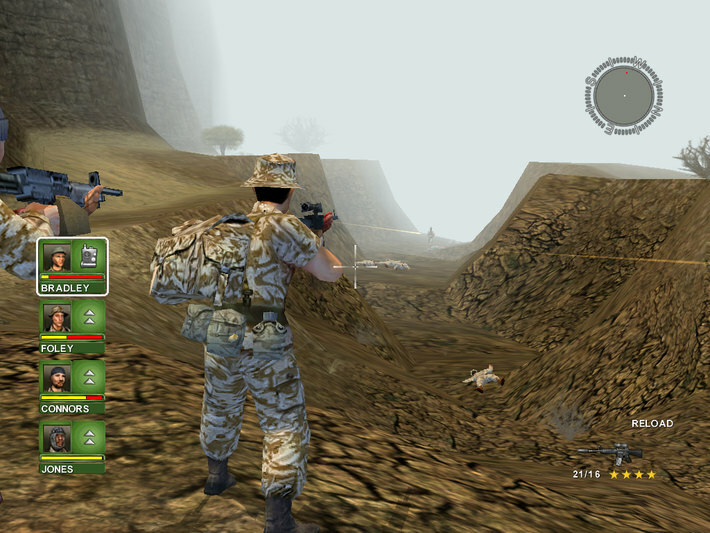
Moderate success and the birth of a series
Conflict: Desert Storm received a rather cool reception from industry media, most often receiving "fives" and "sixes" from them. Nonetheless, the game was liked by the players. It's enough to say that just the PlayStation 2 version attracted 800,000 buyers in the United States alone; moreover, on Metacritic, the game holds an average player rating of 7.8/10.
Taking advantage of the moment, the devs swiftly began working on a sequel to their creation, resulting in Conflict: Desert Storm II - Back to Baghdad, which was released in 2003. A year later, the third part of the series, Conflict: Vietnam, saw the light of day, and two years later - the fourth installment of the cycle, titled Conflict: Global Storm, launched.
In 2008, the series returned with the game Conflict: Denied Ops. The project was originally developed under the name Crossfire, and it was only later that a decision was made to rename it; furthermore, because it was significantly different from its predecessors (suffice it to say it was an FPS), it's difficult to view it as a true continuation. Shortly after its release, in August 2008, Pivotal Games was closed.
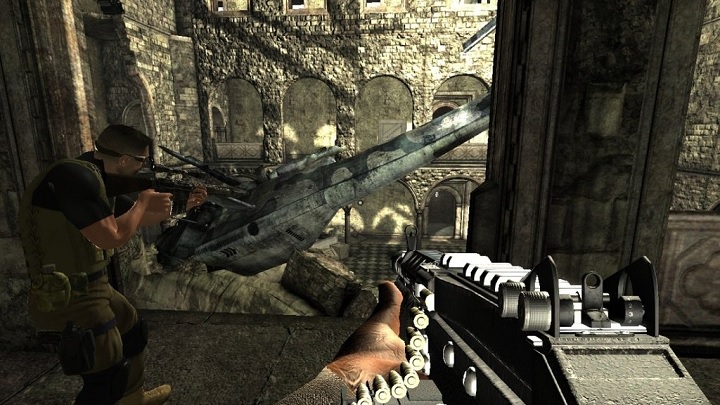
How to play Conflict: Desert Storm today?
At the time of writing these words, Conflict: Desert Storm is available on both GOG.com and Steam. In both cases, the game was valued at $6.99.
Before starting the game, however, it's worth bearing in mind that this title has aged quite bad. What strikes the eye first and foremost are the surroundings, which from today's perspective may seem as if they were made with an ax. Nonetheless, after turning a blind eye to this and some other problems (the gameplay has also been gnawed by the tooth of time), you can still have a good time.
0

Author: Christian Pieniazek
Started working with Gamepressure.com in August 2016. Although the Game Encyclopedia has been his pride and joy from the beginning, he also writes for the Newsroom and the Editorial section. Gained professional experience through a now-defunct service, in which he worked for almost three years. Graduated in Cultural Studies at the AGH University of Krakow. Runs his own business, jogs, cycles, loves mountain hiking, is a fan of nu metal, is interested in space, and of course, enjoys playing games. Feels best in action games with an open world and RPGs, although won't turn down good racing or shooting games.
Latest News
- End of remote work and 60 hours a week. Demo of Naughty Dog's new game was born amid a crunch atmosphere
- She's the new Lara Croft, but she still lives in fear. Trauma after Perfect Dark changed the actress' approach to the industry
- „A lot has become lost in translation.” Swen Vincke suggests that the scandal surrounding Divinity is a big misunderstanding
- Stuck in development limbo for years, ARK 2 is now planned for 2028
- Few people know about it, but it's an RPG mixing Dark Souls and NieR that has received excellent reviews on Steam, and its first DLC will be released soon
